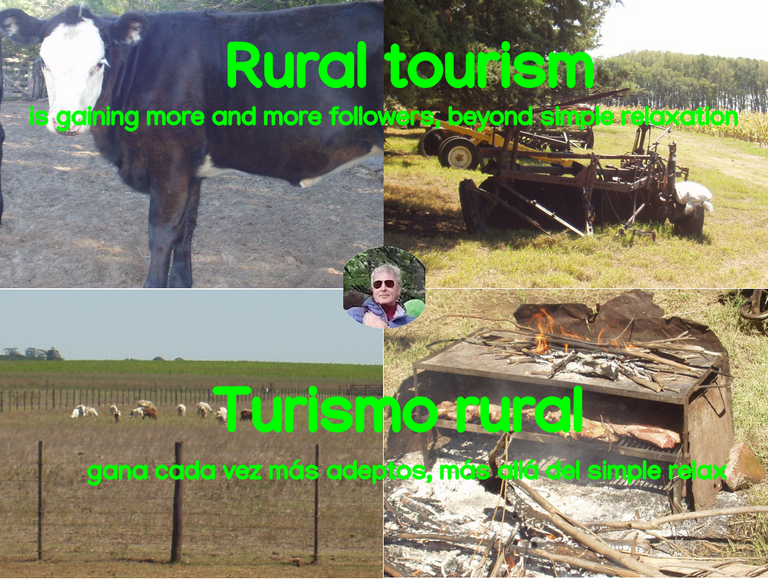
One of the most painful things that the coronavirus pandemic has brought about, apart from the deaths and illnesses caused, which have ended up dismantling any health apparatus, is isolation.
Isolation that has forced us to stay in our homes, to limit our trips, to not be able to travel abroad, etc.
For those of us who live not far from rural environments and have the possibility of visiting a farm or farm with crops and animals, this anonymous situation and restrictions, gives us the opportunity to make another type of tourism more in contact with pure nature, that daily nature that people living in rural communities enjoy every day. From sunrise to the moment when the sun slowly disappears in the horizon at sunset.
Last summer I had the opportunity to visit one of these rural establishments for a few days and I returned to the city as they say "with my batteries recharged", after having breathed pure air and oxygen for several days, far away from the city traffic in a totally relaxing and calm atmosphere.
Below I show you some pictures of this beautiful experience.
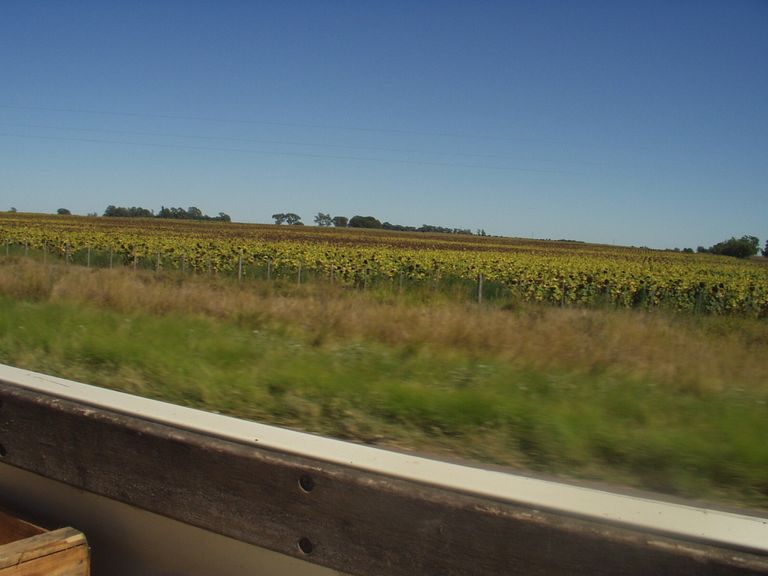
Crops are aligned along the road or street and are generally represented by cereals (wheat, corn, rye, barley) or oilseeds (soybeans, sunflower). Intensive soybean cultivation has been important in the last two decades.
Aerial silos are the most practical and safest way to store harvested grain. In this way, producers are assured of being able to sell the product under more favorable market conditions.

Each piece of land or field is no larger than 15-20 hectares (each hectare is equal to 10,000 square meters) and is divided by wire fences, generally of 8 to 10 wires, one of which is made of barbed wire.
In order to access each field, commonly called "potreros" in the Argentine rural gerga due to its "reduced" dimension -although this word used in the big city inhabitant may seem ironic or humorous- the so-called "tranqueras" are used, thick wooden openings that are opened and closed manually to free the way for vehicles, animals and farming tools.
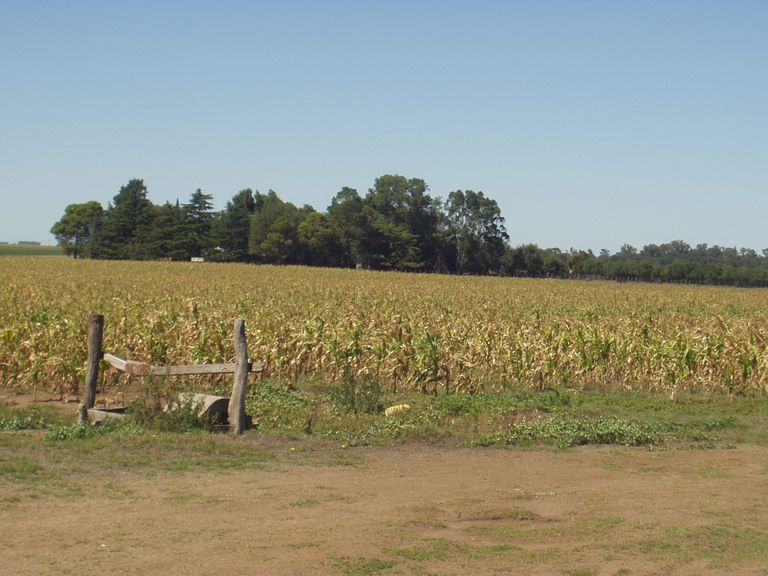
In some fields that border each other and where there is no presence of free-ranging animals, it is possible to avoid the fact that they represent -if they have to be built- a rather high cost for the farm.
After a good walk in the middle of the countryside you can improvise a good Argentinean barbecue anywhere in the countryside and using any of the many elements that are always at hand, in this case, a rudimentary grill. Firewood to burn and make embers can be found everywhere.
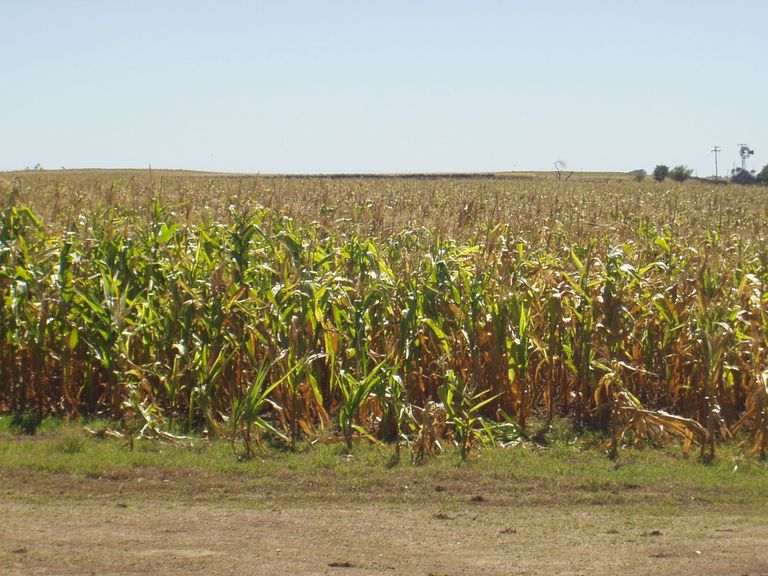
The cultivation of corn has always represented a good agricultural resource, since if weather conditions do not allow harvesting or the price is very low, it can be chopped, crushed with special machines and serve as food or fodder for animals. It can be stored in subway silos (underground) to preserve its high nutritional value and humidity.
Trees in the countryside (generally eucalyptus and pine trees of great resistance and that live for many years) are a natural element in the rural environment.
They are also used to fix the soil of the "medanos" sandy hills that degrade the surrounding soil and endanger crops.
The pigs offer the possibility of being raised close to the house in small stalls or pens, thus facilitating their feeding in the form of fodder or grain.
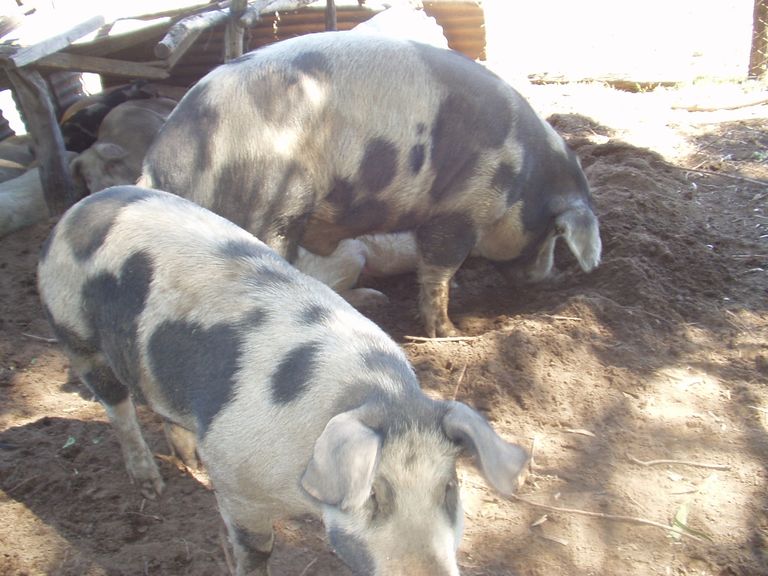
Some breeds of pigs reach and exceed 150 kgs. The territorial distribution of primary swine production establishments (animal breeding) is most concentrated in the north of the province of Buenos Aires, south of Santa Fe and center of Córdoba, where stocks are also mostly concentrated, beyond their scattered distribution throughout the national territory.
The access to the main house is limited by a wooden door or gate to prevent access to the animals and allowing within that fence the breeding of poultry and other small animals, besides being the place where the tools and agricultural implements of daily use are kept.
Cattle roam freely in the fields, although in recent years the so-called "feet lot" or feedlot system has been developed more and more frequently. Feedlots in Argentina, cattle fattening pens based on balanced feed, began to be generalized in Argentina at the beginning of the 21st century.
Ancient elements of tillage and cultivation have been replaced by modern machinery, increasing significantly the volume of production together with the use of hybrid and modified seeds and new techniques of breeding and fattening of animals.

The planting of fruit trees within the perimeter of the main house has always been a dominant feature of rural farms. In this case, a walnut tree.

El turismo rural gana cada vez más adeptos, más allá del simple relax.
Una de las cosas más dolorosas que ha provocado la pandemia del coronavirus, además de las muertes y enfermedades provocadas, que han acabado por desmantelar cualquier aparato sanitario, es el aislamiento.
Aislamiento que nos ha obligado a quedarnos en nuestras casas, a limitar nuestros viajes, a no poder viajar al extranjero, etc.
Para los que vivimos no lejos de entornos rurales y tenemos la posibilidad de visitar una finca o finca con cultivos y animales, esta situación de anonimato y restricciones, nos brinda la oportunidad de hacer otro tipo de turismo más en contacto con la naturaleza pura, que naturaleza cotidiana que las personas que viven en comunidades rurales disfrutan cada día. Desde el amanecer hasta el momento en que el sol desaparece lentamente en el horizonte al atardecer.
El verano pasado tuve la oportunidad de visitar durante unos días uno de estos establecimientos rurales y volví a la ciudad como dicen "con las pilas recargadas", después de haber respirado aire puro y oxígeno durante varios días, lejos del tráfico de la ciudad. en un ambiente totalmente relajante y tranquilo.
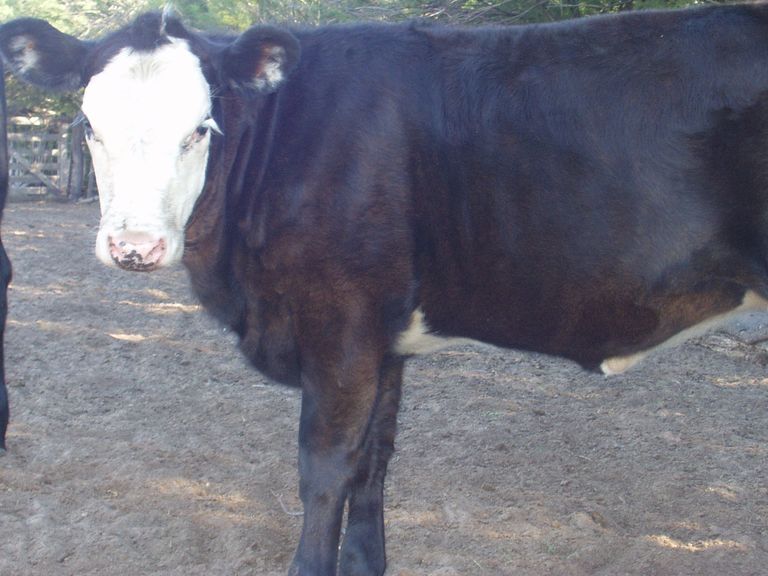
A continuación les muestro algunas fotografías de esta hermosa experiencia.
Los cultivos se alinean a lo largo del camino o calle y generalmente están representados por cereales (trigo, maíz, centeno, cebada) o oleaginosas (soja, girasol). El cultivo intensivo de soja ha sido importante en las últimas dos décadas.

Los silos aéreos son la forma más práctica y segura de almacenar el grano cosechado. De esta manera, los productores tienen la seguridad de poder vender el producto en condiciones de mercado más favorables.
Cada terreno o campo no supera las 15-20 hectáreas (cada hectárea equivale a 10.000 metros cuadrados) y está dividido por alambradas, generalmente de 8 a 10 alambres, uno de los cuales es de alambre de púas.
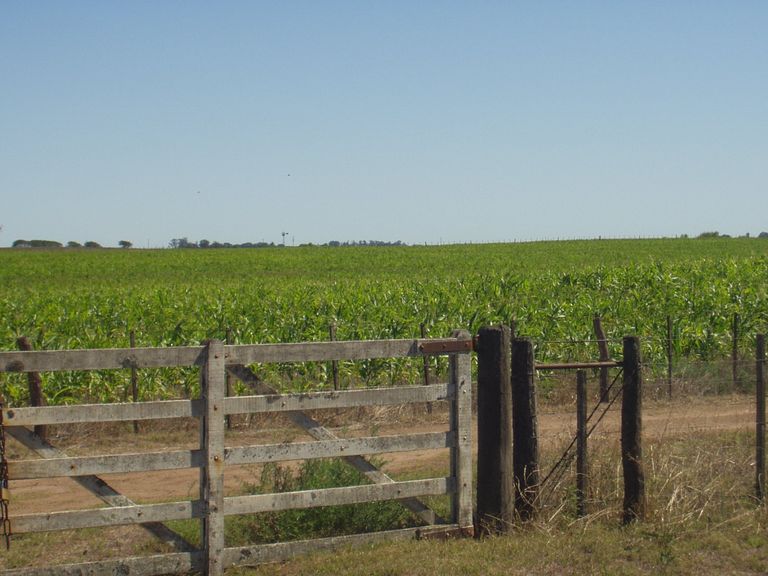
Para acceder a cada campo, comúnmente llamados "potreros" en la gerga rural argentina por su dimensión "reducida" -aunque esta palabra utilizada por el habitante de la gran ciudad pueda parecer irónica o humorística- se utilizan las llamadas "tranqueras", gruesas aberturas de madera que se abren y cierran manualmente para dejar paso a vehículos, animales y herramientas agrícolas.
En algunos campos que lindan entre sí y donde no hay presencia de animales en libertad, se puede evitar que representen -si hay que construirlos- un costo bastante elevado para la finca.
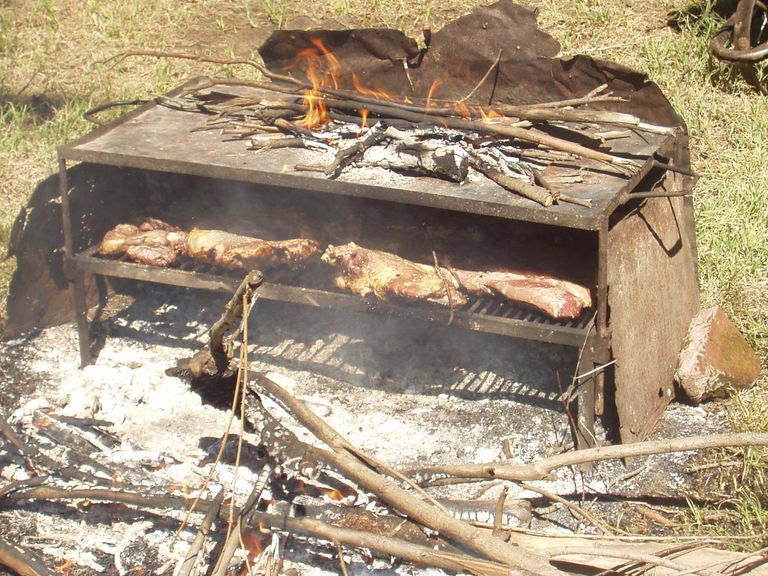
Después de un buen paseo en medio del campo puedes improvisar un buen asado argentino en cualquier lugar del campo y utilizando cualquiera de los muchos elementos que siempre tienes a mano, en este caso, una rudimentaria parrilla. Por todas partes se puede encontrar leña para quemar y hacer brasas.
El cultivo del maíz siempre ha representado un buen recurso agrícola, ya que si las condiciones climáticas no permiten su recolección o el precio es muy bajo, se puede picar, triturar con máquinas especiales y servir como alimento o forraje para los animales. Se puede almacenar en silos subterráneos (subterráneos) para preservar su alto valor nutricional y humedad.
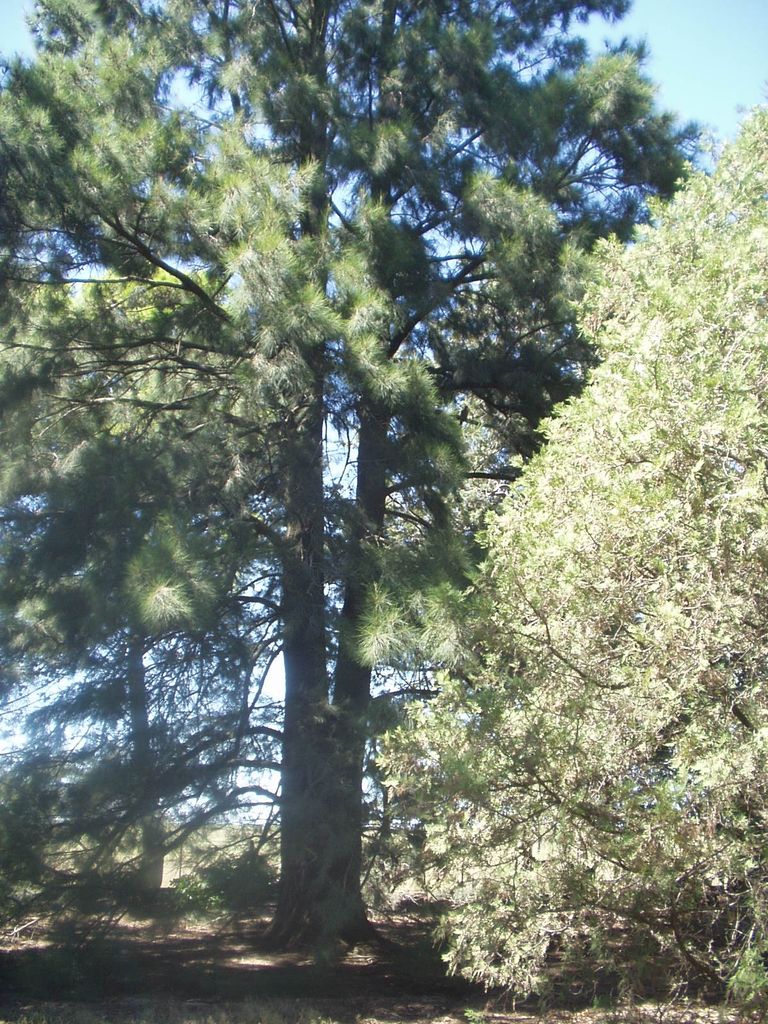
Los árboles del campo (generalmente eucaliptos y pinos de gran resistencia y que viven muchos años) son un elemento natural en el medio rural.
También se utilizan para fijar el suelo de los "médanos" cerros arenosos que degradan el suelo circundante y ponen en peligro los cultivos.
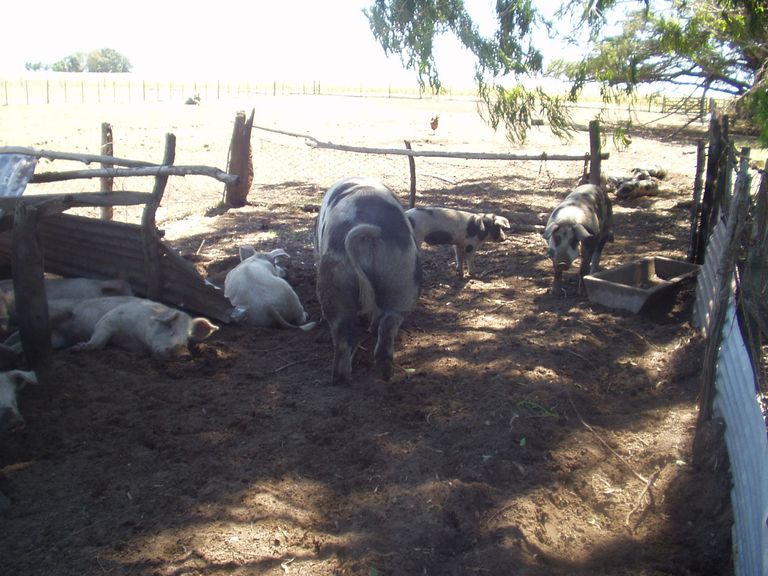
Los cerdos ofrecen la posibilidad de ser criados cerca de la casa en pequeños establos o corrales, facilitando así su alimentación en forma de forraje o grano.
Algunas razas de cerdos alcanzan y superan los 150 kgs. La distribución territorial de los establecimientos de producción primaria porcina (cría de animales) se concentra más en el norte de la provincia de Buenos Aires, sur de Santa Fe y centro de Córdoba, donde también se concentran mayoritariamente las poblaciones, más allá de su distribución dispersa en todo el territorio nacional.

El acceso a la casa principal está limitado por una puerta o portón de madera para impedir el acceso a los animales y permitir dentro de ese cerco la cría de aves de corral y otros animales pequeños, además de ser el lugar donde se guardan las herramientas e implementos agrícolas de uso diario.
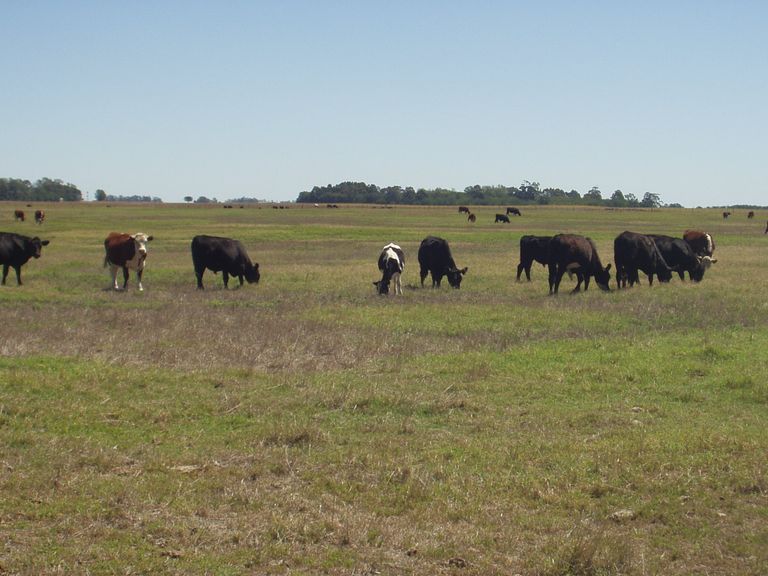
El ganado vacuno campa a sus anchas por los campos, aunque en los últimos años se ha desarrollado cada vez con más frecuencia el llamado sistema de "feet lot" o feedlot. Los feedlots en Argentina, corrales de engorde de ganado a base de alimento balanceado, comenzaron a generalizarse en Argentina a principios del siglo XXI.
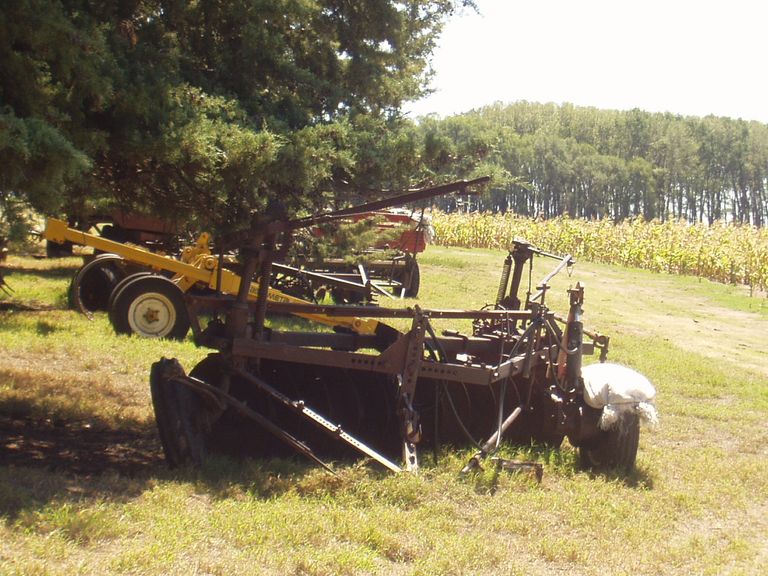
Elementos antiguos de labranza y cultivo han sido sustituidos por maquinaria moderna, aumentando significativamente el volumen de producción junto con el uso de semillas híbridas y modificadas y nuevas técnicas de cría y engorde de animales.
La plantación de árboles frutales dentro del perímetro de la casa principal siempre ha sido una característica dominante de las explotaciones rurales. En este caso, un nogal.

Until our next tour. Thanks for reading and commenting!!
*Hasta nuestro próximo recorrido. Gracias por leer y comentar!!
[Crossposting / Posteo cruzado](Crossposting: https://hive.blog/hive-150329/@greengalletti/rural-tourism-is-gaining-more-and-more-followers-beyond-simple-relaxation)


Sources consulted (my property) for the preparation of this article. Some paragraphs may be reproduced textually.
Fuentes consultadas (de mi propiedad) para la elaboración del presente artículo. Algunos párrafos pueden estar reproducidos textualmente.
| Argentina Discovery. |  | |
|---|---|---|
| Galería Fotográfica de Argentina. |  | |
| Viaggio in Argentina. |  |